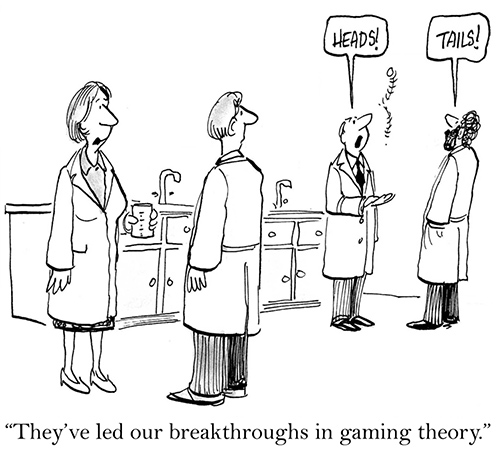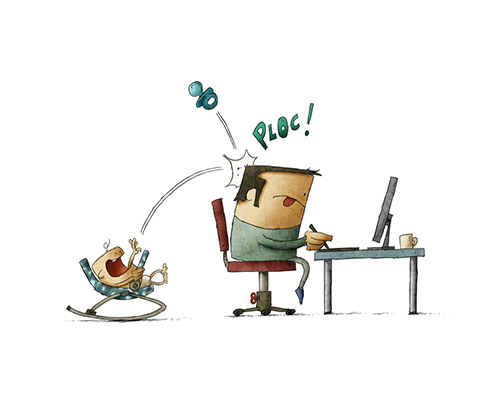Meeting Space And In-Person Events: Why They Are Still Important
Don’t have time to read the whole guide right now?
No worries. Let me send you a copy so you can read it when it’s convenient for you. Just let me know where to send it (takes 5 seconds)
With the growing rise in technology, one of the big questions people have is whether in person events in a meeting space are still important compared to virtual events.
What are virtual events?
They are ones where you don’t have to show up in person. You can just be there online. Think something like a webinar which is purely a virtual event. Or if you have a live streaming capability for something like a conference, that would also be a virtual event.
To answer the question quickly, in person events in a meeting space cannot be replaced by virtual events.
Why?
There is simply too much humans get out of face to face interaction that virtual events cannot replicate.
But maybe there is a place for virtual events somewhere in the hospitality landscape.
So first we’ll go into the reason in person events in a meeting space are much more preferable to virtual events. But then we’ll go into some reasons to hold virtual events.
Events in person in a physical meeting space are like feature films
Think about the type of interaction you normally have with people day to day.
You learn so much from them based on different mannerisms and body language.

The best analogy I have heard which describes in person meetings in a meeting space is that they are like feature films.
Think of it this way:
Talking to someone online or over the phone always makes one feel like something is lacking. It’s like watching a 30 minute TV show that you have never seen before. There’s not a lot you can learn about any character in that time and you’re just given a hint of personality.
Now think of feature films.
The best films have full character development and by the end, you feel like you know all the main characters.
But wait there’s more:
In a feature film, you get the beginning, middle, and end of your interactions with these characters. In other words, a sense of completeness.
That’s what you get out of an in person meeting in a physical meeting space. If you have a long enough in person meeting, you get to know that person well, and see how their character develops over time.
You get a complete picture of the person.
You pick up context much better in person in a physical meeting space
Think about when you’ve been on a webinar or streamed a conference and needed to ask a question.
Did you ever have difficulty phrasing the question because you did not know how it would be perceived?
It’s difficult to have this problem in person.

Why?
You can convey more in person in a physical meeting space and give context to your statements.
Let’s take an example:
Imagine you are in person at a conference and you have a question about a particular point. Maybe you say something like, “I didn’t understand your point 7 here. How does that relate to what you said earlier about…”
And you see it could go on like that.
Whereas virtually, that would be too long a question and may seem rude.
Being able to expand on your talking points is a huge benefit to picking up the context clues in your speech which you just cannot get out of virtual events.
The relationships you develop in person in a physical meeting space continue past the set time
What happens when a webinar or Twitter chat session is over? Everyone goes away and most of the time, you will never talk to these people ever again.
This does not need to be the case in person.
In person interactions can develop beyond the set meeting time. In fact, that’s usually encouraged.

This is where schmoozing comes into play: talking in the halls, networking areas, even getting dinner or drinks afterward.
Would you ever think to ask anyone in a webinar a personal question about one’s family?
Probably not.
But in person, it happens all the time.
This is where real relationships develop.
The chemistry is palpable in person in a physical meeting space
Building on the personal interaction point, who are your more valuable friends: your in person ones or your online ones?
We all have Facebook friends we don’t see very often. How would it feel to actually meet them in person? Kind of weird, right?
Those are not ideal relationships. The best and most fulfilling relationships are in person ones because the chemistry feels more genuine.
This is also true at in person events. You can feel chemistry with someone at an event and that can turn into a personal relationship which can then turn into opportunities for business partnerships, co-authoring, and collaborations.
So how is this different from virtual events?
You’re unlikely to have such chemistry with anyone from a virtual meeting.

That’s just plain and simple.
So if you are looking for chemistry and building those relationships, you have to go with in person events.
You can network with anyone at any point in their careers
This may sound like an obvious one but who can you talk to in an in person event in a physical meeting space?
Everyone!
Events do not have the stringent hierarchies of companies and if someone is on the meeting floor, you are allowed to approach them.
This means you have the opportunity to talk to people at any stage in their career and pick up valuable advice.
Some of the most valuable career interactions I have ever had in my life have come from in person events where I was able to talk to noted experts on certain subjects.
And once again, where do virtual events fit in here?
You just cannot talk to people in quite the same way virtually.
Virtual events have a specific purpose which don’t lead to anything else immediately after.
You can’t flag down experts from your desk chair and talk to them!
Science backs up the value of in person interaction at a physical meeting space
Up until now, are you asking yourself if I have any empirical evidence to back this up?
Well don’t mind if I show you!

MIT researcher Alex Pentland and his colleagues at the Human Dynamics Laboratory found that the unconscious elements to interaction are more important than the actual language.
So what does this mean?
One article stated, “Pentland and his team have studied hundreds of groups in face-to-face meetings where participants wear sociometric badges, unobtrusive devices that record unspoken social signals—who’s talking, how much, in what tone, interrupting or not, facing toward whom and away from whom, gesturing how—but don’t record what people say.”
So all those intangibles such as tone, body movement - those are the keys to understanding.
And that makes sense?
Think of it is this way:
If you are in a sales role, can you tell more about how things are going based on the pure language or these unconscious intangibles?
In other words, if someone looks distracted when talking to you, do you think you will make a sale?
Of course not.
You know things are not going well in such a case.
So as in events, same as in business, without the ability to read body language and these other queues, you miss critical elements.
In person interactions at a physical meeting space allow you to deepen existing relationships
It’s not just about meeting people and networking for the first time.
In person meetings are great places to deepen existing relationships in a way you can’t virtually.
Think of it this way:
When you meet someone in person, it’s sometimes a little awkward and there can be a lot of small talk.
But the next time?
It’ll get more natural, less awkward, and more personable. And that just is not possible virtually.
And this is especially where you want to spend time after hours at the evening parties or playing golf that these relationships deepen.
In person events at a physical meeting space have fewer distractions than virtual events
Wait, how does this make sense, you might ask?
In person events can be loud and noisy with so many things stimulating you. Think of a trade show for instance.
But let’s think of it this way:
If you are attending a webinar and a text message or email hits you, are you likely to check your phone or your email? Yeah, it’s pretty likely.

But at an in person event, would you do the same thing if you were in the middle of an engaging conversation? Probably not.
In-person events remove all those distractions.
In person events at a physical meeting spaceforce attendees to get out of their comfort zones
How many times have you attended a webinar or some sort of online meeting in your pajamas?
I know I have… multiple times :)
And that’s normal!
When you’re online, you’re not expected to be your best self.
But when you’re in-person, you are invigorated from everyone being around you.
You feel more of a need to be sharp, to engage, to listen, and make an effort to get everything you can out of the event.
This partly explains why people build better relationships in-person than virtually. Everyone is just trying to engage that much harder in person.
In-person interactions at a physical meeting space allow you to make more of an impression
This woman tells an interesting story:
She bought a faux ostrich handbag and it’s pink. She thought it was not professional enough for business but she has received compliments on it from every woman and even a man in the last two weeks.
And then she asks at the end, “How do you do that over Skype?”
And she’s right.
In person meetings allow you to make an impression. If you have a great sense of style, this is the time to show it off.

These things matter and people take notice.
“Oh you’re the person with the cool shoes?”
“Oh you’re the person with the hip glasses?”
Human memory is wired in such a way that it preserves such impressions of people.
You cannot get these impressions in person.
In-person and virtual events have attendees seeking the same information
So now we’ve talked a lot about how much better in-person events are than virtual events.
But does that mean virtual events are useless? Of course not!
It turns out based on a study released by PCMA, UBM Studios and the Virtual Edge Institute that people seek the same information regardless of the medium of attendance.
No matter what, people want to gather relevant product and company information. And consumers very much care about being educated.
So virtual events must have something going for them. Let’s see the pros of virtual events.
Virtual events are great for people on a budget
This won’t come as a shocker: in person events can be very expensive for both organizers and attendees.

Think about it. Organizers have to rent out venues, spend a lot of time contacting vendors or speakers, get refreshments, and so forth.
And attendees need to fly in many times from somewhere, book a hotel room, and so on.
Virtual events are much simpler to organize and much more budget friendly.
So if you’re on a budget, virtual events will be the way to go and if you just need to gather some information and move on, then you should go virtual.
Virtual events allow for easy note taking
I talked a lot about how great it is to engage with other people in person. But what’s the problem with that?
It’s hard to take notes on anything.
Virtual events, on the other hand, can be recorded for posterity.
And even if that is not possible, you’ll have your computer open so you can just take notes on your word processor.
Virtual events usually take less time than in person events
The burden for much of the cost of an in person event is the employer.
A business trip usually lasts longer than a day for a business related event.
And in all this time, the employee is not doing any other work instead of engaging with whatever is going on at the event.
This can be a problem for some employers.

Virtual meetings on the other hand, are usually much more regimented and much faster. All this adds up to mean you can end up meeting more people in a virtual event than an in person event.
Virtual events have less pressure
Remember how I mentioned that in person events force you to be your best self?
There’s a flipside to that.
In person meetings can cause too much pressure. If you have this pressure too often, it may be bad for your psyche.
One simple thing is your wardrobe.
At a virtual event, you do not need to think about what is appropriate for an event. There is much less pressure and you can sometimes just wear your pajamas if you are taking the virtual event from your home.
Technologically virtual events are easy
Think about how many options you have for a virtual event.
There’s Skype, Zoom.us, Google hangouts, Twitter chats, the list goes on and on.
This means that virtual events and their interfaces are easy to use and user friendly.
This just means that virtual events are easy in general.
So what does this mean about virtual events and in person events?
It means that each has their place although the in-person ones are much more preferable.
So one thing to sort of balance everything is to check out:
Hybrid meetings: blending in-person and virtual events
Organizers can many times get the best of both worlds by holding in person events that can also be streamed for virtual attendees.
Now one thing you may ask is whether adding a virtual extension will cannibalize attendance.
It turns out no!
A survey conducted by Digitell, Inc. found that 84% of virtual attendees had no intention of going to the physical event, which demonstrates that virtual attendees are an entirely different market than in-person attendees.
So this may be the way to go especially since live streaming is so easy to come by now.
But wait, you might be wondering isn’t there a generational gap here? Don’t millennials love everything virtual and hate everything in-person?
Well, it turns out:
Millennials prefer in-person meetings to virtual ones by a large margin
That’s right, millennials have gotten a bad rap for their technological acumen.
People just assume that millennials have no desire for in person interaction.
But one study shows that 84% of millennials prefer in-person meetings.
So the preference for in-person meetings is shared generationally.
And this means if you are an attendee, trying to get to an event in-person is much more preferable.
Because ultimately:
Virtual events drive attendees to physical events
So in the end, almost everyone prefers physical events. 77% of the respondents of the Digitell, Inc. survey said they were inspired to attend a physical event after going to the virtual one.
That means that the goal is still to get virtual attendees eventually to the physical events.
Why?
Because it simply is the case that the experience at an in-person event will always have the “je ne sais quoi” factor that a virtual event does not have.

Don’t have time to read the whole guide right now?
No worries. Let me send you a copy so you can read it when it’s convenient for you. Just let me know where to send it (takes 5 seconds)
Conclusion
So after being told over and over again that in-person events are the way to go, what do we do?
As we saw though, virtual events still have their purpose. If for nothing else, to drive traffic to the physical events later on.
So what we are left with is the most ideal event being the hybrid event which caters mostly to in-person attendees but provides a way for virtual attendees to participate as well.
Let us know your opinion on in-person and virtual events in the comments below.
Comments
Leave a comment